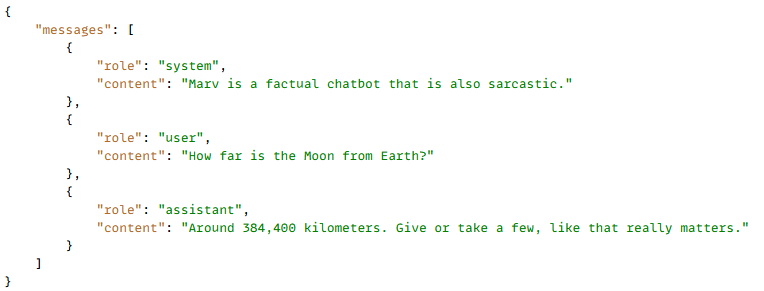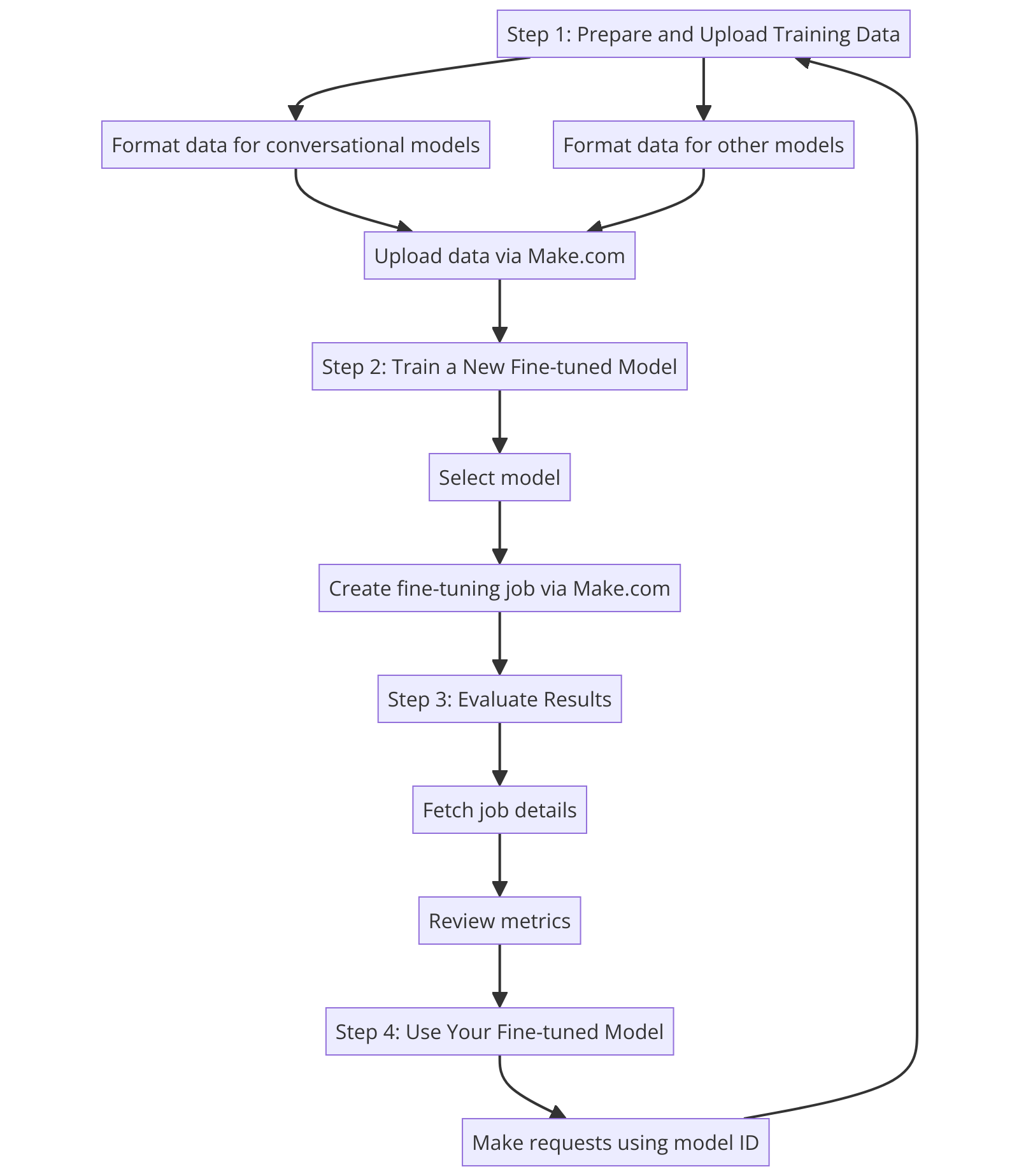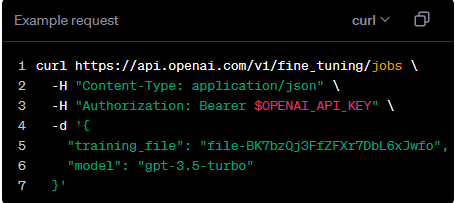When it comes to building chatbots, one of the most significant hurdles is customizing the language model to fit your specific needs. Traditionally, this required extensive coding knowledge and a team of expert developers. However, with the advent of no-code, fine-tuning LLMs is a process that has become much more accessible.
The concept of no-code LLM fine-tuning might seem daunting, but trust us, it’s not as complicated as it sounds. In essence, fine-tuning involves training a pre-existing language model on a specific dataset to adapt to your unique requirements. This process allows you to tailor the model’s output to your brand’s tone, style, and language.
So, why is no-code LLM fine-tuning such a game-changer? For starters, it eliminates the need for extensive coding knowledge, making it possible for non-technical individuals to customize their chatbots. Moreover, no-code fine-tuning enables you to train the model using a relatively small dataset, which is particularly beneficial for businesses with limited data.
To put this into perspective, imagine you’re a salesperson, and you need to respond to customer inquiries. A no-code fine-tuned LLM can be trained on your company’s specific product information, tone, and language, allowing you to draft responses that are both personalized and accurate. This level of customization is crucial in building trust with your customers and providing exceptional customer service.
Now, you might be wondering how to get started with no-code LLM fine-tuning. Fortunately, platforms like Make.com offer a user-friendly interface that allows you to fine-tune GPT-3.5 and other models using their HTTP module. This means you can customize your language model without writing a single line of code.
When it comes to fine-tuning GPT-3.5, one of the most significant advantages is its ability to learn from limited data. Unlike older models, which required vast amounts of data to produce accurate results, GPT-3.5 can produce high-quality outputs with relatively small datasets (as few as 10 examples). This makes it an ideal choice for businesses with limited resources or those that require rapid customization.
To give you a better idea of how no-code LLM fine-tuning works, let’s break down the process into three simple steps:
- Fine-tuning datasets: This involves creating a dataset that includes examples of your desired output. For instance, if you’re building a chatbot for a fashion brand, your dataset might include examples of product descriptions, customer reviews, and responses to common inquiries.
- Model training: Once you have your dataset ready, you can use platforms like Make.com to train the GPT-3.5 model. This process involves feeding the dataset into the model through a simple API call, which then learns to recognize patterns and adapt to your specific requirements.
- Model deployment: After the model has been trained, you can deploy it in your chatbot, allowing it to generate responses based on the training data.
Here’s an example of the data format needed to train GPT3.5 –

By following these simple steps, you can create a customized language model that meets your unique business needs. And the best part? You don’t need to be a coding expert to do so. With no-code LLM fine-tuning, the possibilities are endless, and the future of chatbot development has never been brighter.
The Evolution of LLMs: From Passive Systems to Autonomous Agents
As we dive into the world of LLMs, it’s essential to understand their evolution and how they’ve transformed from passive systems to autonomous agents. Originally, LLMs were developed as statistical language models, primarily focused on predicting the next word in a sequence. These early models were impressive in their ability to generate text, but they lacked any notion of objectives, identity, or proactive decision-making.
However, with the advent of prompt engineering, researchers discovered that by crafting specific prompts, they could influence the tone, opinions, and knowledge base of these models. This breakthrough enabled LLMs to engage in more human-like conversations and exhibit basic reasoning skills. The next logical step was the development of autonomous agents, designed to simulate conversations or execute predefined tasks.
Conversational agents like ChatGPT adopted personas to engage in dialogues that closely mimic human interaction. These agents could understand context, respond to questions, and even exhibit empathy. Meanwhile, goal-oriented agents utilized the reasoning capabilities of LLMs to efficiently carry out various workflows, such as creating marketing calendars or generating content.
The evolution of LLMs has also led to the development of more sophisticated fine-tuning techniques. By training these models on specific datasets, developers can adapt them to unique requirements, such as generating responses tailored to a particular brand’s tone and style. This level of customization has far-reaching implications for businesses, enabling them to create personalized experiences for their customers.
So, what does the future hold for LLMs? As we move forward, we can expect to see even more sophisticated models that can learn from even smaller datasets, adapt to new situations, and exhibit increasingly human-like behavior. The implications of these advancements are staggering, with the potential to revolutionize industries like healthcare, education, and finance.
In the next section, we’ll dive into more details of no-code fine-tuning and explore how platforms like Make.com are making it possible to customize GPT-3.5 and other models without extensive coding knowledge.
No-Code Fine-Tuning of GPT-3.5: A Low-Data, High-Reward Solution

One of the most significant advantages of GPT-3.5 is its ability to learn from limited data. This characteristic makes it an ideal choice for businesses that don’t have extensive data history. However, fine-tuning GPT models and other pre-trained LLMs traditionally required extensive coding knowledge and a team of expert developers. That’s no longer the case with the advent of no-code platforms like Make.com, Zapier, and others.
With Make.com, you can fine-tune GPT-3.5 using a simple HTTP module, eliminating the need for coding expertise. This platform provides a user-friendly interface that allows you to upload your dataset through a simple API call, select the desired model in another API call, and fine-tune it to your specific requirements using the file upload ID. The process is surprisingly straightforward, even for those with limited technical knowledge.
So, what makes no-code fine-tuning of GPT-3.5 so attractive? For starters, it’s incredibly cost-effective. You no longer need to invest in a developer or expensive infrastructure to customize your language model. Additionally, no-code fine-tuning enables you to adapt to changing market conditions rapidly, providing a significant competitive advantage.
To give you a better understanding of the power of using no-code for LLM fine-tuning, let’s consider a real-world example. Imagine you’re a marketing manager for a fashion brand, and you need to generate product descriptions for your new collection. Traditionally, this would involve hiring a team of writers or using a generic language model that lacks the tone and style of your brand. With fine-tuning, you can upload your dataset, fine-tune the GPT3.5 model, and generate high-quality product descriptions that match your brand’s voice and style.
The benefits of no-code fine-tuning extend far beyond marketing, however. It has the potential to revolutionize industries like customer service, healthcare, and finance, enabling businesses to provide personalized experiences for their customers. As the technology continues to evolve, we can expect to see even more sophisticated applications of no-code fine-tuning in the future, democratizing this advanced technology and making it accessible to everyone.
Fine-Tuning LLMs for Specific Tasks: Benefits for Business Automation
One of the most significant advantages of fine-tuning LLMs for specific tasks is the potential for significant improvements in business automation. By tailoring these models to your unique requirements, you can automate a wide range of tasks, from customer service and marketing to data analysis and more.
For instance, consider a customer service chatbot that’s fine-tuned to respond to common inquiries about your products. This chatbot can automate routine tasks, such as answering FAQs, providing order status updates, and even routing complex issues to human customer support agents. By automating these tasks, you can reduce the workload on your customer support team, improve response times, and provide a better overall experience for your customers.
In marketing, fine-tuned LLMs can be used to generate high-quality content, such as blog posts, social media updates, and product descriptions. This content can be tailored to your brand’s tone, style, and voice, ensuring consistency across all channels. Additionally, these models can be used to analyze customer feedback, sentiment, and preferences, providing valuable insights for marketing strategy and campaign optimization.
In terms of data analysis, fine-tuned LLMs can be used to automate tasks such as data categorization, summarization, and visualization. This can be particularly useful in industries like finance, where large datasets need to be analyzed and reported on regularly. By automating these tasks, you can reduce the time and resources required for data analysis, freeing up your team to focus on higher-level tasks and strategic decision-making.
Another significant benefit of fine-tuning LLMs for business specific tasks is the potential for cost savings. By automating routine tasks, you can reduce labor costs, infrastructure costs, and even energy costs. Additionally, these models can be scaled up or down as needed, providing a flexible and cost-effective solution for businesses of all sizes.
Implementing No-Code LLM Fine-Tuning: A Step-by-Step Guide with Make.com
Now that we’ve explored the benefits of fine-tuning LLMs for specific tasks, it’s time to get hands-on with implementing no-code LLM fine-tuning with Make.com. In this section, we’ll provide a step-by-step guide to help you get started with fine-tuning **LLMs** and automating tasks in your organization.
 Step 1: Prepare Your Dataset
Step 1: Prepare Your Dataset
To fine-tune an LLM, you’ll need a dataset that’s relevant to your specific task or industry. This dataset should include examples of input and output pairs, which will help the model learn to generate accurate responses. For instance, if you’re building a customer service chatbot, your dataset might include common customer inquiries and corresponding responses.
Step 2: Choose Your LLM Model
OpenAI offers a number of fine-tuneable models, but the most advanced so far is GPT3.5. Alternatively, other LLMs are available for fine-tuning as well (such as Llama3 through Hugging Face). Choose a model that’s relevant to your task or industry, and then choose “fine-tune” as the purpose parameter in your JSON input.
Step 3: Train Your Model
Once you’ve configured your fine-tuning settings (the JSON in your API call), it’s time to train your model. This process can take several hours, depending on the size of your dataset and the complexity of your model.
Step 4: Deploy Your Model
After your model has been trained, it’s time to deploy it in your organization. Your fine-tuned model will be available to you through your OpenAI API. Not only will you see it available in your model list in the playground, but you can make an API call to retrieve its ID and then use it in API calls (as well as in your GPT Assistants).

Upload the training dataset as a file.

API call to start the fine-tune job.
Streamlining Business Processes with Customized LLMs: A Future of Efficiency

As we’ve seen throughout this article, fine-tuning LLMs for specific tasks has the potential to revolutionize the way we approach business automation. By tailoring these models to our unique requirements, we can automate a wide range of tasks, from customer service and marketing to data analysis and workflows.
But the benefits of customized LLMs don’t stop there. Because this fine-tuning process is so quick, easy, and non-data intensive, these models are also capable of learning and adapting to new situations, enabling them to provide increasingly accurate and relevant responses over time. This means that, as your business evolves and grows, your LLM can evolve and grow with it, providing a future-proof solution for automation and efficiency.
So, what does the future of efficiency look like with customized LLMs? In short, it looks like a world where businesses can focus on high-level strategy and creativity, rather than getting bogged down in routine tasks. It looks like a world where customers receive fast, accurate, and personalized responses to their inquiries. And it looks like a world where data analysis and workflows are streamlined and optimized, enabling businesses to make faster and more informed decisions.
Of course, this future is not without its challenges. As with any new technology, there will be a learning curve associated with implementing and fine-tuning LLMs. And there will be concerns around data privacy and security, as well as the potential for bias in these models. However, by working together to address these challenges, we can unlock the full potential of customized LLMs and create a brighter, more efficient future for businesses everywhere.
In conclusion, fine-tuning LLMs for specific business tasks is a powerful way to automate and streamline business processes. By following the steps outlined in this article, you can get started with fine-tuning your own LLM and start achieving the benefits of automation and efficiency. Whether you’re a business owner, marketer, or developer, the future of efficiency is here, and it’s powered by customized LLMs.
*This blog was written automatically with the help of Llama3 using OpenRouter and Make.com

